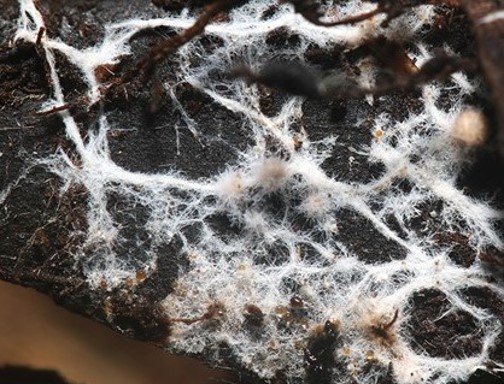If you watch Star Trek Discovery, then you will have become familiar with the spore drive, a technology that can instantly transport the starship Enterprise from point to point across the Galaxy. It makes warp drive look like a putt-putt engine.
The spores being referred to in the technology’s name are fungal. The full name of the technology is the displacement-activated spore hub drive, an organic mycelial network spanning the Galaxy that allows the starship to leap across space instantaneously.
Does such a network exist in space? Highly unlikely but a wonderful science fiction convention to move starships and plots along well beyond warp speed.
Mycelium is interesting stuff. In the non-science fiction world, it is the root structure of fungi. We see the fruit of fungi: the mushrooms, toadstools, puffballs, and truffles. What we don’t easily see is the enormous underground network of filaments that are the body. When we see a mushroom we don’t equate it with being a reproductive organ of a much bigger organism. It’s as if we cannot see the apple tree for the apple or apple blossom.
Mycelium is versatile. Here are just a few companies that are turning fungi into products.
- Loop Biotech is constructing biodegradable coffins using mycelium.
- Infinite Roots turns mycelium into many different foods.
- MyForest Foods makes mycelium bacon.
- MycoWorks, Bolt Threads, and SQIM use mycelium to make leather alternatives. The latter has created Mogu, a line of acoustic panels and flooring systems made from mycelium.
- Ecovative Design is building compostable and biodegradable packaging using mycelium.
- Mycocrete is a mycelium concrete alternative for building construction.
How can mycelium be all of these things? Mycelium creates a fine network mesh as it spreads underground. It is easy to cultivate. Before it becomes a mushroom or a puffball it can be harvested and dried. When compacted it can be turned into substitutes for lumber, foam, plastic, and textiles. Because it is organic it can be used to make foods. It is biodegradable, compostable, renewable, and grows in the dark. What’s not to like?
Mycelium can be used for mycoremediation, an aerobic bioremediation technology that turns fungi into a tool to break down toxins and other environmental pollutants. It can be used to clean contaminated sites. It can detoxify soil and absorb oil spills. It can be made into biofilters to clean contaminated runoff and polluted water.
A 2022 article appearing in the International Journal of Biomaterials, describes the use of mycelium-based composites as material substitutes for cardboard, wood, gypsum, cement, polymers and plastic. The article lists 23 different fungi in use to make insulation, packaging, particle and wallboard, bio cement and concrete, and biopolymers. It points to mycelium-based biomaterial advantages such as low-embodied carbon and lower material costs. It also notes that mycelium substitutes could remove up to 800 million tons of carbon dioxide from the atmosphere annually if they were to replace materials such as those mentioned above.
If you want to see mycelium in action and you have a compost heap, look no further than your backyard where mycelium can be seen converting kitchen organics, grass clippings, leaf litter, and other garden debris into rich soil for your flower beds.
Talk about versatility, mycelium can be a global game changer helping to build sustainable circular economies in many industries. The bonus it brings is helping to mitigate climate change.










[…] applications. Where can you find it in the 21st-century human world? Earlier this year I described mycelium as becoming the next big thing in technology. I listed its use to construct biodegradable coffins, compostable packaging, foods like faux bacon, […]